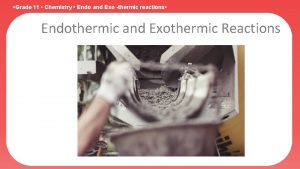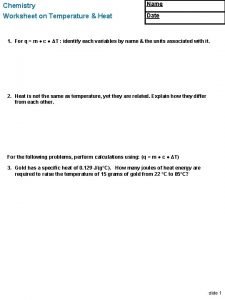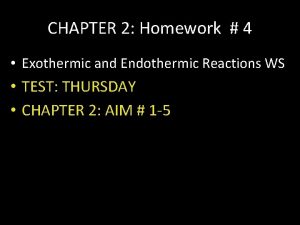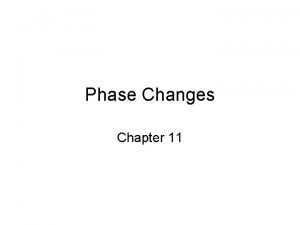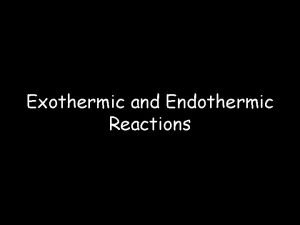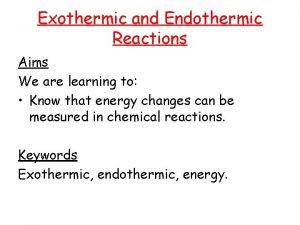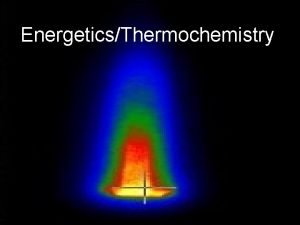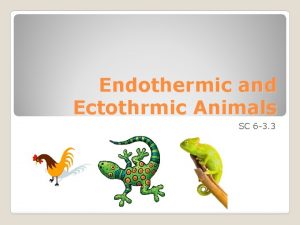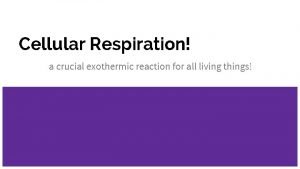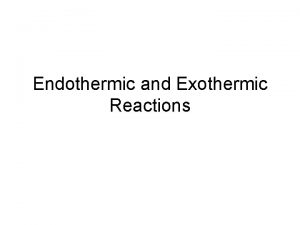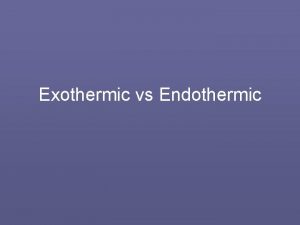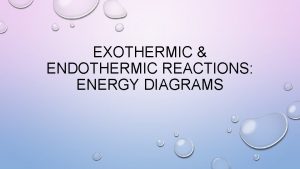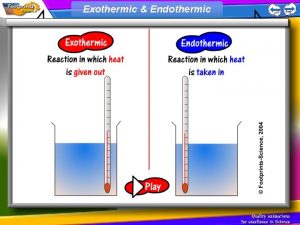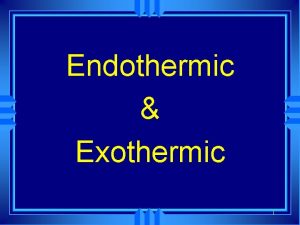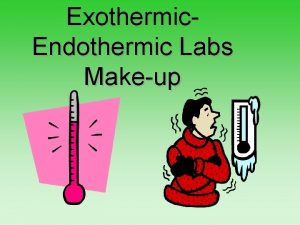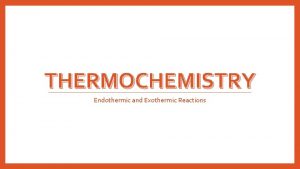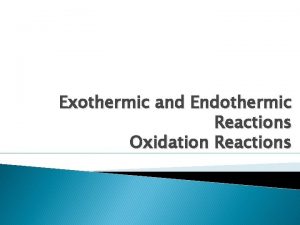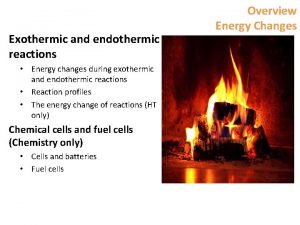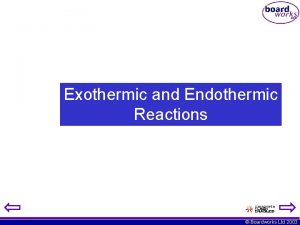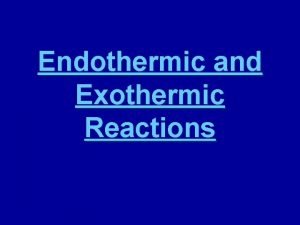Exothermic and Endothermic Reactions Energy and Chemical Reactions













- Slides: 13

Exothermic and Endothermic Reactions

Energy and Chemical Reactions • Chemical Energy – Energy stored in the chemical bonds of a substance. • Chemical reactions always involve energy changes. • Making bonds and breaking bonds involve energy changes

Activation Energy • The energy required to break the bonds in the reactants for a chemical reaction to occur.

Endothermic and Exothermic reactions Step 1: Energy must be SUPPLIED to break chemical bonds of reactants: Step 2: Energy is RELEASED when new chemical bonds are made in the products: A reaction is EXOTHERMIC if more energy is RELEASED than SUPPLIED. If more energy is SUPPLIED than is RELEASED then the reaction is ENDOTHERMIC © Teachable. Some rights reserved. http: //teachable. net/res. asp? r=1910

Energy of Chemical Reactions • Based on the type of energy (heat) change involved, chemical reactions are classified as either exothermic or endothermic. – Exothermic: energy is released • Exo- = “exit” • Burning of gasoline – Endothermic: energy is absorbed • Endo- = “into” • Cooking of pancakes

Endothermic Diagram Activation Energy used in bond breaking Energy released in bond making Energy absorbed in reaction Endothermic – more energy is taken in to break the bonds in the reactants than released by the bonds being formed in the products. Therefore, energy is absorbed.

Endothermic • Heat (energy) taken in • Temperature of the substance drops • Products feel COLD reaction

Endothermic Reactions • You may see an endothermic reaction written like this… REACTANTS + ENERGY PRODUCTS OR REACTANTS + HEAT PRODUCTS

Exothermic Diagram Activation Energy used in bond breaking Energy released in bond making Exothermic – More energy is released when the products where formed than energy was used to break bonds in the reactants. Therefore, a net release of energy.

Exothermic • Heat (energy) given off • Temperature of the substance rises • Products feel HOT reaction

Exothermic Reactions • You may see an exothermic reaction written like this… REACTANTS PRODUCTS + ENERGY OR REACTANTS PRODUCTS + HEAT

ENDOTHERMIC OR EXOTHERMIC? 6 CO 2 + 6 H 2 O + Energy C 6 H 12 O 6 + 6 O 2 ENDOTHERMIC! CH 4 + 2 O 2 CO 2 + 2 H 2 O + Energy EXOTHERMIC!

Examples Exothermic • Combustion of fuels • Yeast & Hydrogen Peroxide • Epson salts & water © Teachable. Some rights reserved. http: //teachable. net/res. asp? r=1910 Endothermic • • Photosynthesis Acedic Acid & Sodium Bicarbonate
 Endothermic and exothermic reactions grade 11
Endothermic and exothermic reactions grade 11 Exothermic process
Exothermic process Section 2 reinforcement classifying chemical reactions
Section 2 reinforcement classifying chemical reactions Section 2 classifying chemical reactions worksheet answers
Section 2 classifying chemical reactions worksheet answers Endothermic and exothermic worksheet
Endothermic and exothermic worksheet Exothermic and endothermic homework
Exothermic and endothermic homework Is vaporization endothermic or exothermic
Is vaporization endothermic or exothermic Endothermic vs exothermic
Endothermic vs exothermic Methane oxygen endothermic or exothermic
Methane oxygen endothermic or exothermic Exothermic v endothermic
Exothermic v endothermic Heating and cooling curves
Heating and cooling curves Exo vs endothermic
Exo vs endothermic Ectotherms
Ectotherms Cellular respiration endothermic or exothermic
Cellular respiration endothermic or exothermic
